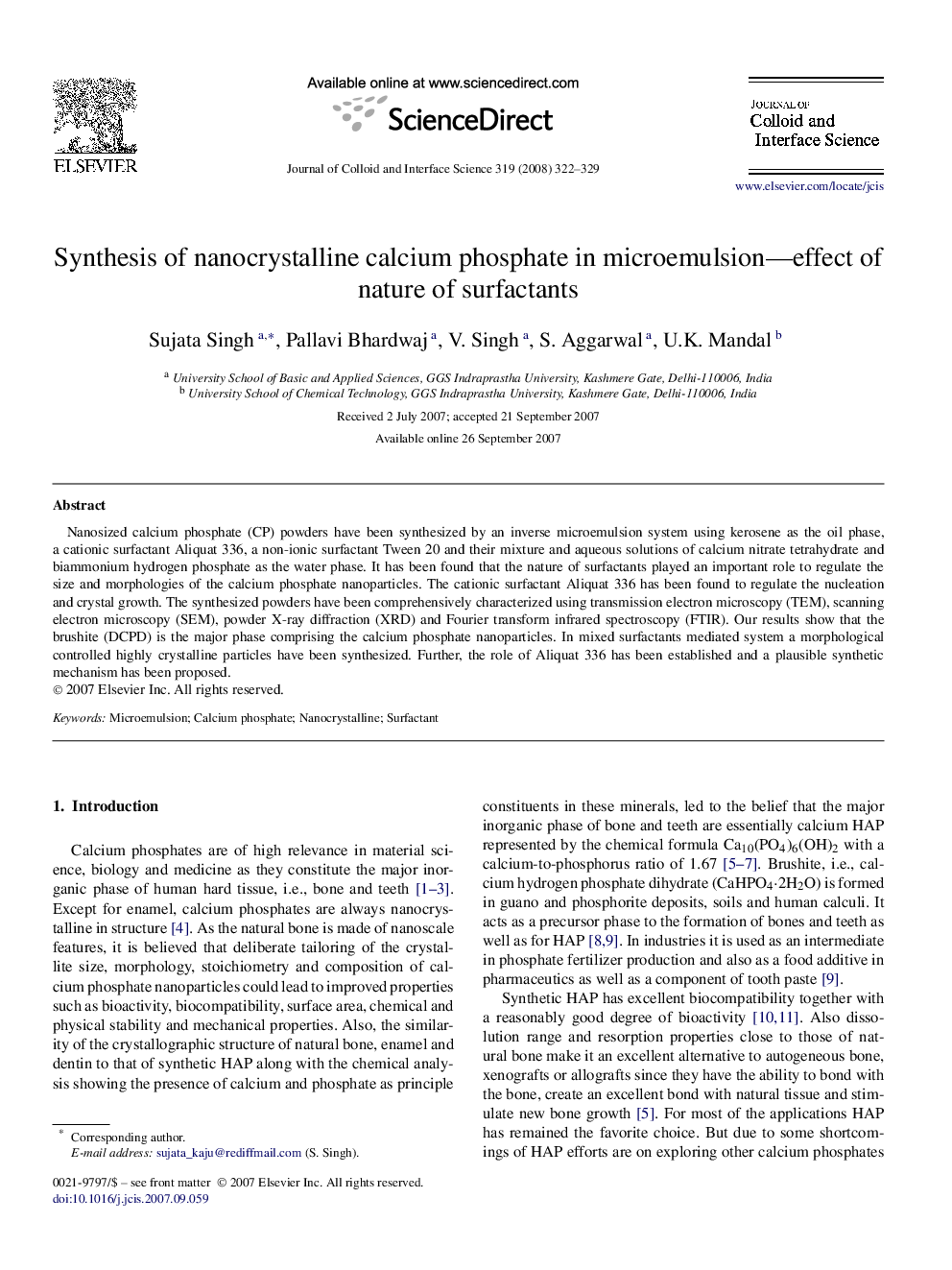| Article ID | Journal | Published Year | Pages | File Type |
|---|---|---|---|---|
| 611483 | Journal of Colloid and Interface Science | 2008 | 8 Pages |
Nanosized calcium phosphate (CP) powders have been synthesized by an inverse microemulsion system using kerosene as the oil phase, a cationic surfactant Aliquat 336, a non-ionic surfactant Tween 20 and their mixture and aqueous solutions of calcium nitrate tetrahydrate and biammonium hydrogen phosphate as the water phase. It has been found that the nature of surfactants played an important role to regulate the size and morphologies of the calcium phosphate nanoparticles. The cationic surfactant Aliquat 336 has been found to regulate the nucleation and crystal growth. The synthesized powders have been comprehensively characterized using transmission electron microscopy (TEM), scanning electron microscopy (SEM), powder X-ray diffraction (XRD) and Fourier transform infrared spectroscopy (FTIR). Our results show that the brushite (DCPD) is the major phase comprising the calcium phosphate nanoparticles. In mixed surfactants mediated system a morphological controlled highly crystalline particles have been synthesized. Further, the role of Aliquat 336 has been established and a plausible synthetic mechanism has been proposed.
Graphical abstractTEM images demonstrating the effect of surfactant on the formation of nanocrystalline calcium phosphate (CP) in microemulsion in presence of (a) non-ionic surfactant, (b) ionic surfactant and (c) mixed surfactant.Figure optionsDownload full-size imageDownload as PowerPoint slide
